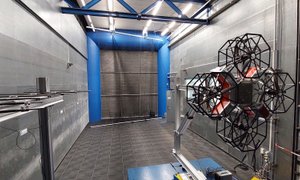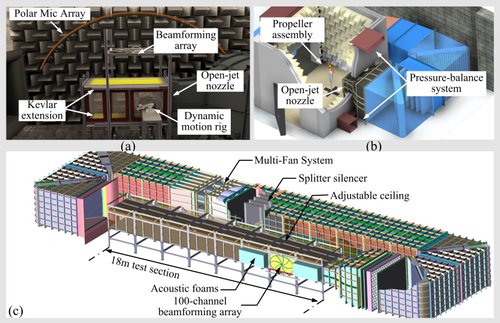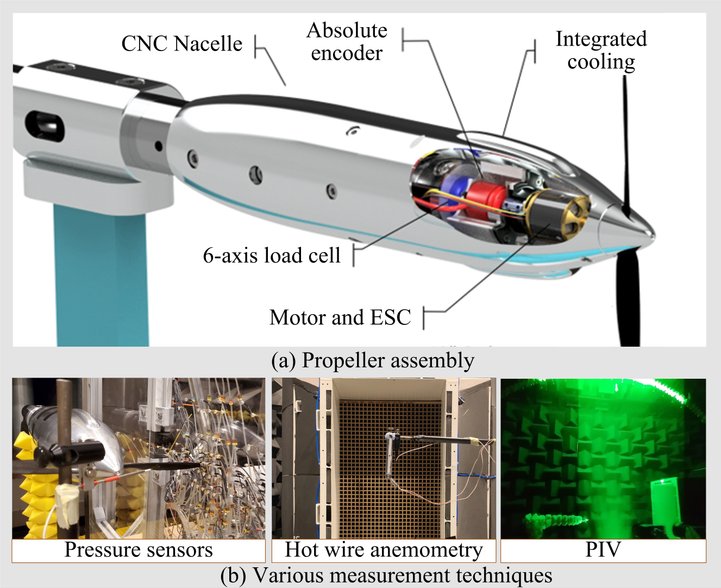Drones experiments TU DELFT
Objectives and Ambitions
AMBITIONS
eVTOLUTION is designed as a low-to-mid-TRL enabler project meant to develop the knowledge, data, tools, and methods that are necessary to understand, model, and optimize aerodynamic performance and noise emissions, accounting for the complex interferences that exist between the propulsion system and the airframe.
Quoting the HORIZON-CL5-2023-D5-01-09 Topic description, this project is focused on “innovative hybrid numerical/experimental procedures, tools and methodologies that will advance further the industrial aircraft design capabilities”.
Objectives of the project and their means of achievement and verification:
- Implement an efficient and accurate multi-fidelity design and optimization framework: Applying the developed tools to design exercises and measure the speed-up of the design process and improvement of the prediction accuracy thanks to the multi-fidelity approach, compared with a single-fidelity one.
- Accelerate the optimization cycle and improve its robustness thanks to machine-learning surrogate models: Measuring the speed-up and accuracy achieved by the combination of physical and surrogate models for the optimization of the aerodynamic performance and noise emissions, compared with an evaluation based on physical models only.
- Improve the accuracy and robustness of the design and optimization using advanced experimental/numerical cross-validation and training methodologies: Measuring the gain in accuracy that is achieved by calibrating the low- and mid-fidelity simulation methods on experimental datasets (especially for low-Reynolds number propeller flows), compared with non-supervised simulation methods, and evaluate its impact on the result and cost of the optimization.
- Assess the relative importance of rotor self-noise, rotor-rotor interaction noise, and rotor-rotor-airframe interaction noise in eVTOLs: Measuring the relative noise emissions through cross-validated dedicated experiments and simulations and provide a ranking as a function of the geometrical and operational parameters.
- Mitigate the noise emissions of optimized rotors and rotor-airframe assemblies using flow and noise control technologies: Measuring the delta-dB achieved with and without the implementation of the noise control technologies for isolated rotors, rotor-rotor interactions, and rotor-airframe interactions.
- Reduce the noise footprint of eVTOL aircraft during departure and approach thanks to optimized and safe trajectories: Measuring the delta-dB achieved with a standard, non-optimized trajectory and with an optimized trajectory respecting the operational and regulatory safety constraints.
- Support the elaboration of noise certification procedures for eVTOL: Providing data (spectra and audio recordings generated by auralisation) to relate the noise footprint estimated in classical engineering metrics (e.g., PNL dBA or EPNL dBA) to sound quality metrics and psycho-acoustic annoyance indicators.
- Support future research aimed at improving the aerodynamic performance and noise emissions of novel aircraft architectures: Generating document, and maintaining publicly available numerical and experimental databases; supporting the development of a digital twin by gathering and maintaining the adequate simulation tools developed during the project.
- Increase the social endorsement of new aircraft architectures and on-demand urban air mobility: Comparing the level of endorsement of a panel of citizens at the beginning and at the end of the project; involving a panel of Citizen Scientists in the actual implementation of the research
The three national wind tunnel facilities at the University of Bristol.
(a) Aeroacoustic wind tunnel, (b) pressure-neutral wind tunnel, and the (c) boundary layer wind tunnel with far-field microphone and beamforming arrays for acoustic measurements
The main goal of the project is to implement and demonstrate a novel design and optimization framework, built upon three pillars:
- exploit the strengths of low-, mid-, and high-fidelity simulation methods at each phase of the design;
- accelerate the optimizations while preserving robustness thanks to data-driven surrogate models combined with physical models; and
- further consolidate the accuracy and robustness of the design and optimization using advanced experimental/numerical cross-validation and training methodologies
(a) Propeller assembly with the various components for aerodynamic loading, blade phase angle and heat management, and the (b) various near-field measurement techniques used for identifying the noise sources and generation mechanisms.



